Traditional Customs of the Spring She Festival
In traditional Chinese folklore, the fifth Wu day (戊日) after the Beginning of Spring (立春) marks the Spring She Festival, a day for worshipping the land deity to pray for a bountiful harvest
The Concept of “She” (社)
The term “She” refers both to the land deity and the sacred site for worship. Farmers traditionally held rituals during sowing and harvest seasons to pray for blessings or give thanks, giving rise to two annual festivals: Spring She (春社) and Autumn She (秋社)
Artistic Features of Spring She Drunken Return
The painting captures the whimsical charm of villagers stumbling homeward after festivities, set against a backdrop of revitalized spring foliage. Its composition mirrors Wang Jia’s poetic imagery of rural jubilation
. Though the scroll bears Zhu Rui’s signature dated to the Shaoding era (1229), scholars note stylistic similarities to Ming Dynasty brushwork, suggesting later additions
The scroll includes four colophons by renowned literati:
- Xianyu Shu (鲜于樞) (Yuan Dynasty): A lyrical ode to wine’s transcendental joy, inscribed in 1282
- Liu Guan (柳貫) (Yuan Dynasty): A contemplative poem on rural tranquility, dated 1344
- Ni Zan (倪瓚) (Yuan Dynasty): A philosophical reflection on impermanence and the solace of wine
- Yu He (俞和) (Ming Dynasty): A toast to agrarian harmony and seasonal abundance
About the Artist
Zhu Rui (active late Northern Song to early Southern Song) was a Hebei-born court painter renowned for landscapes and snowscapes. He served in both the Xuanhe Painting Academy (宣和画院) of the Northern Song and the Shaoxing Academy (绍兴画院) after the dynasty’s southward retreat, earning titles like Digong Lang (迪功郎) and a golden belt honor
. His works often feature travel and labor themes, such as caravan journeys and winter hunts

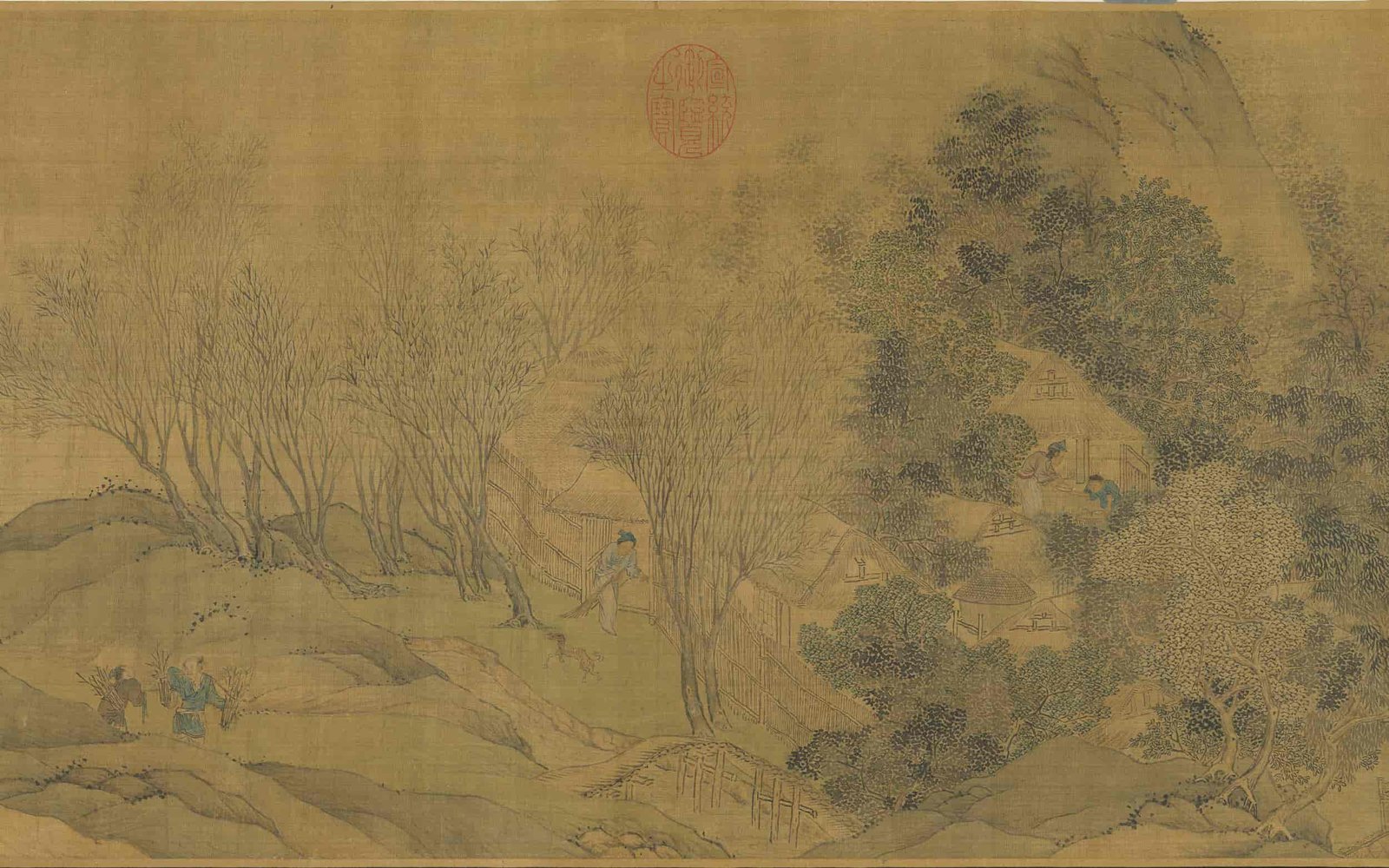
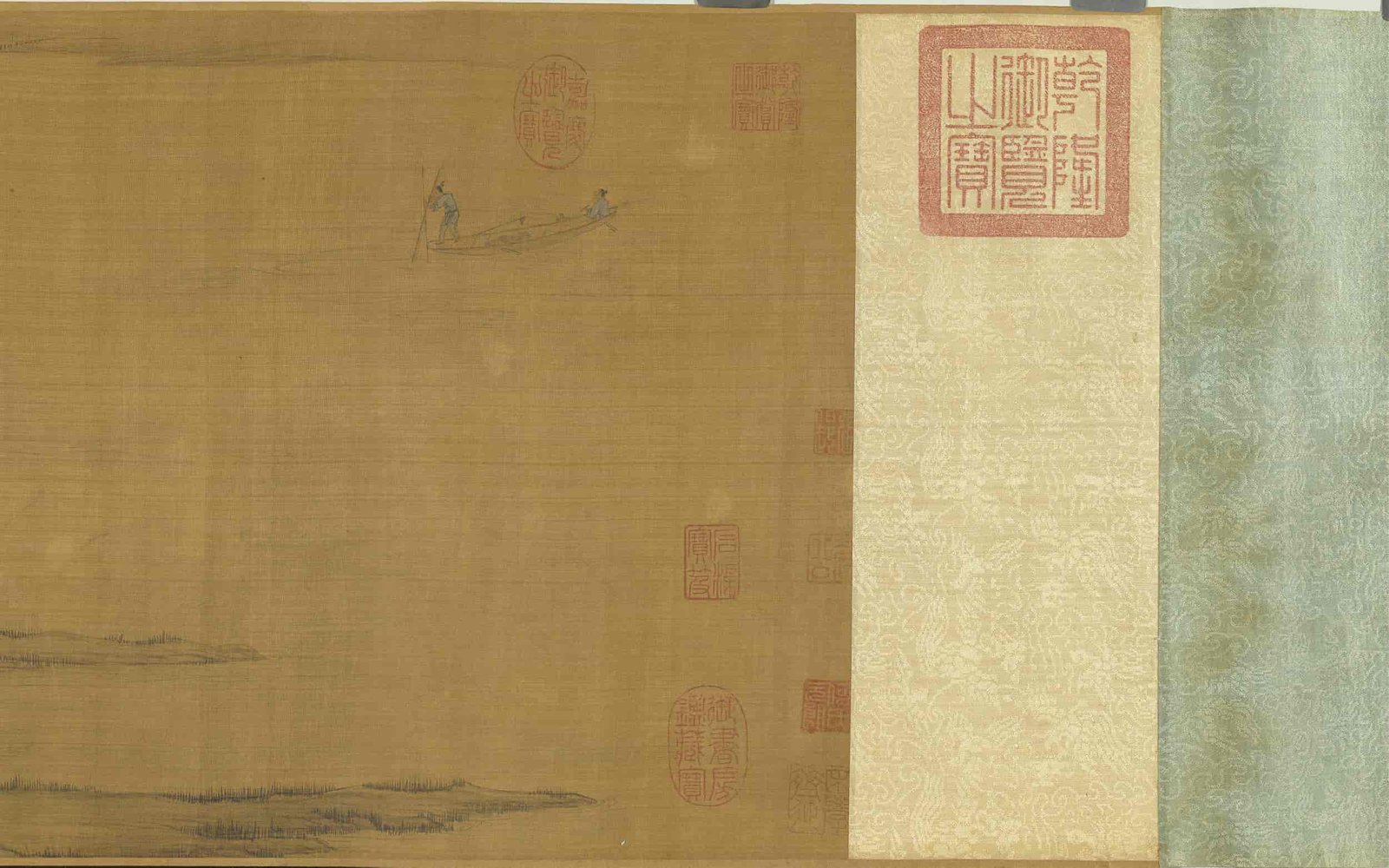
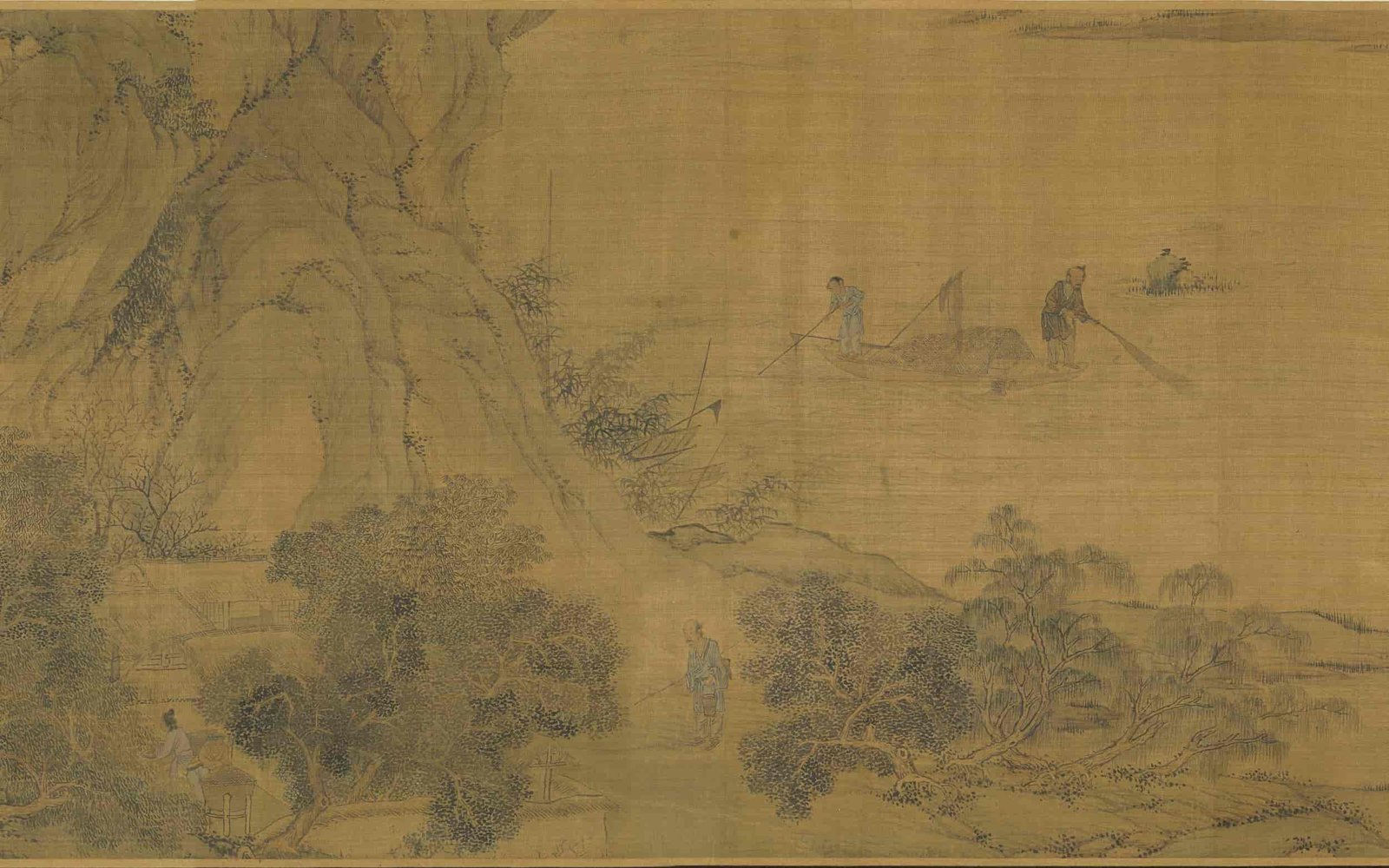
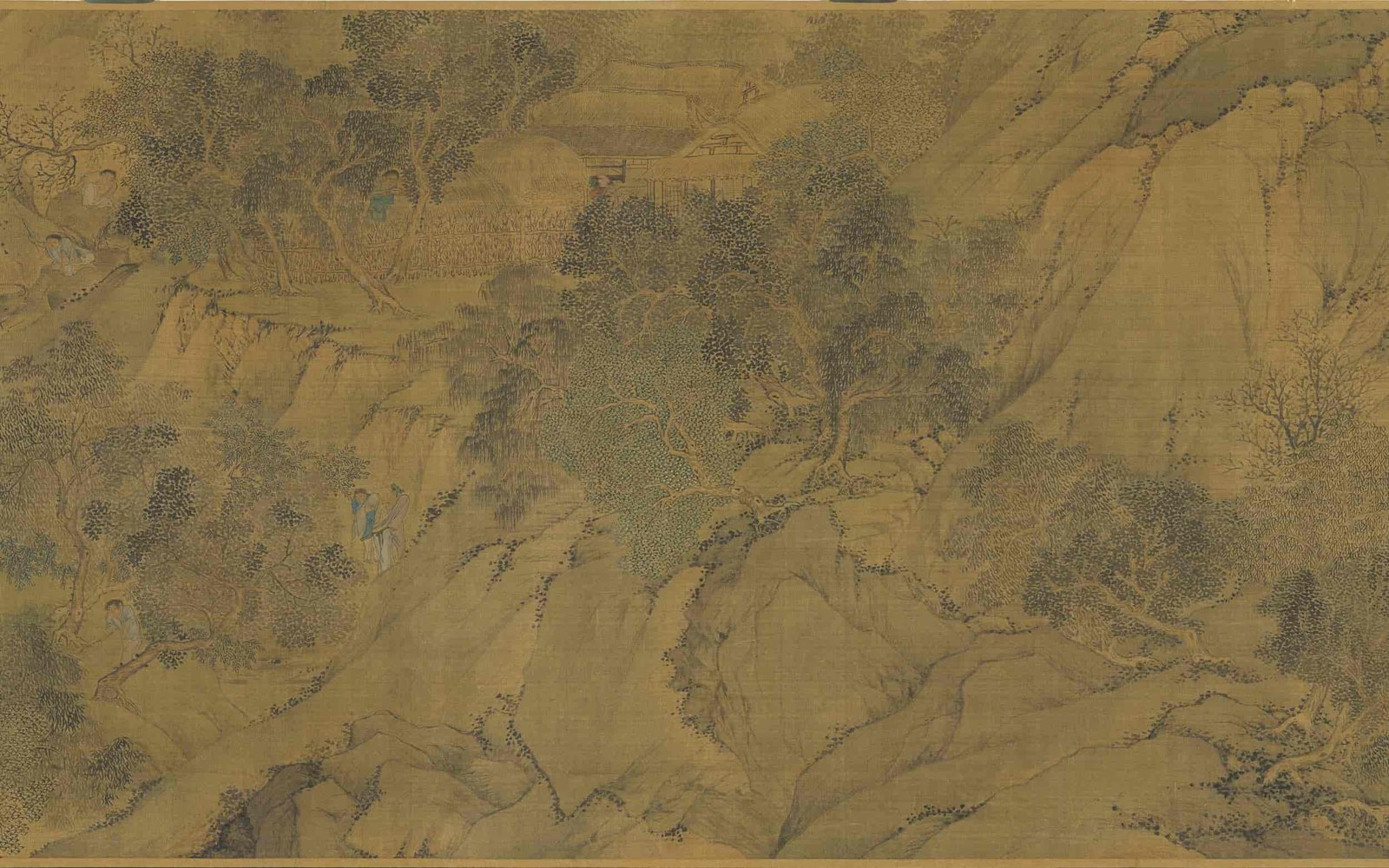
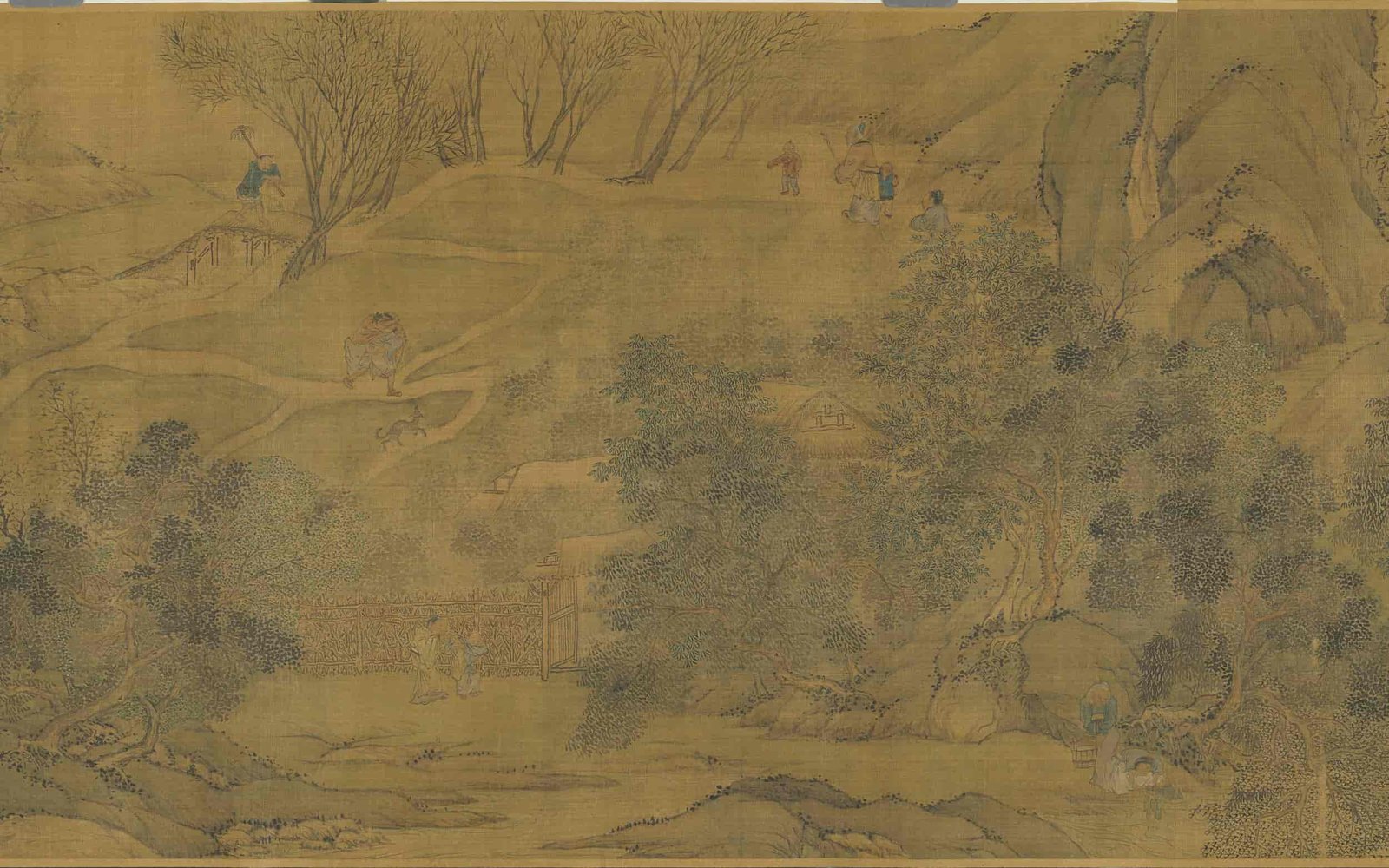
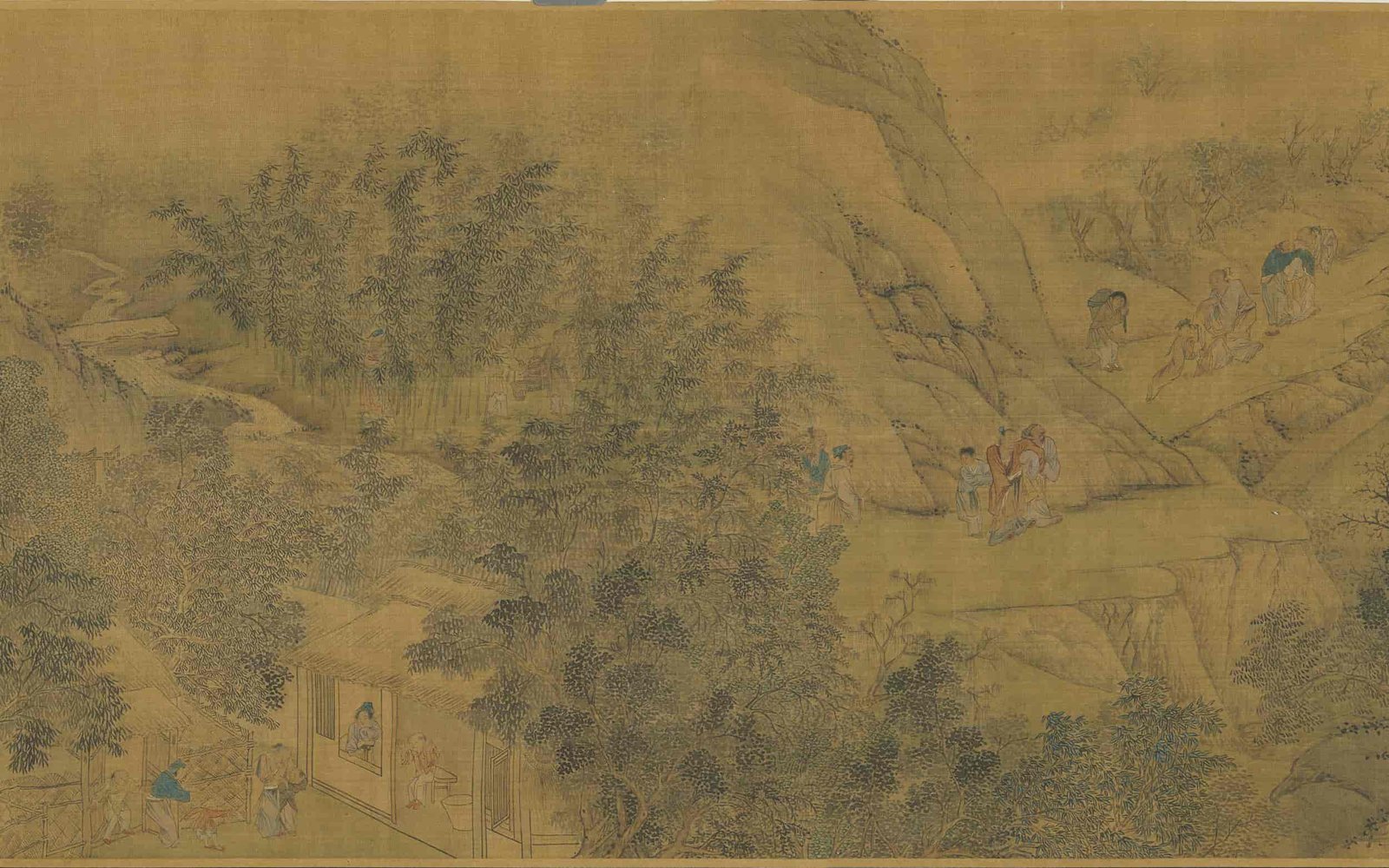
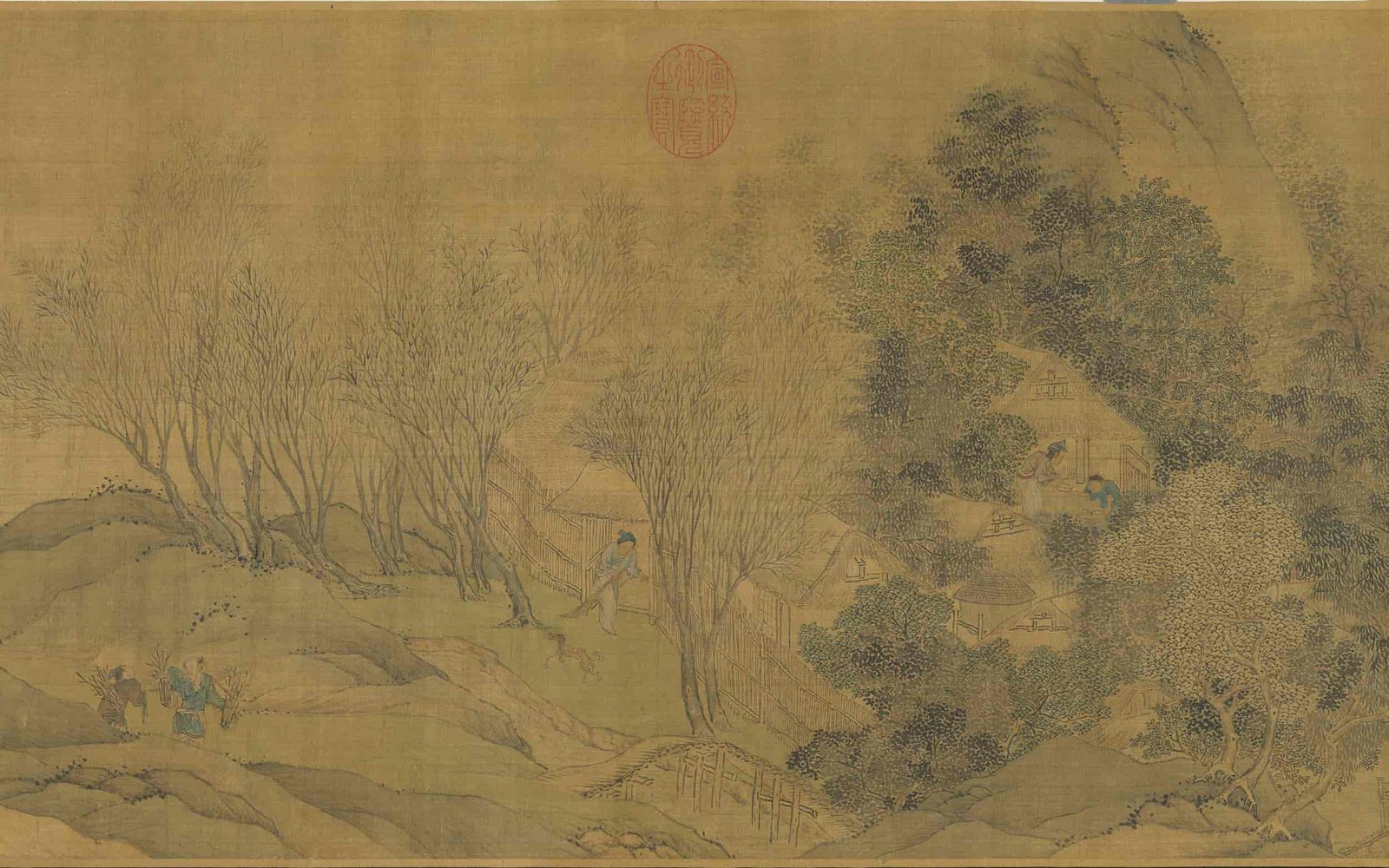
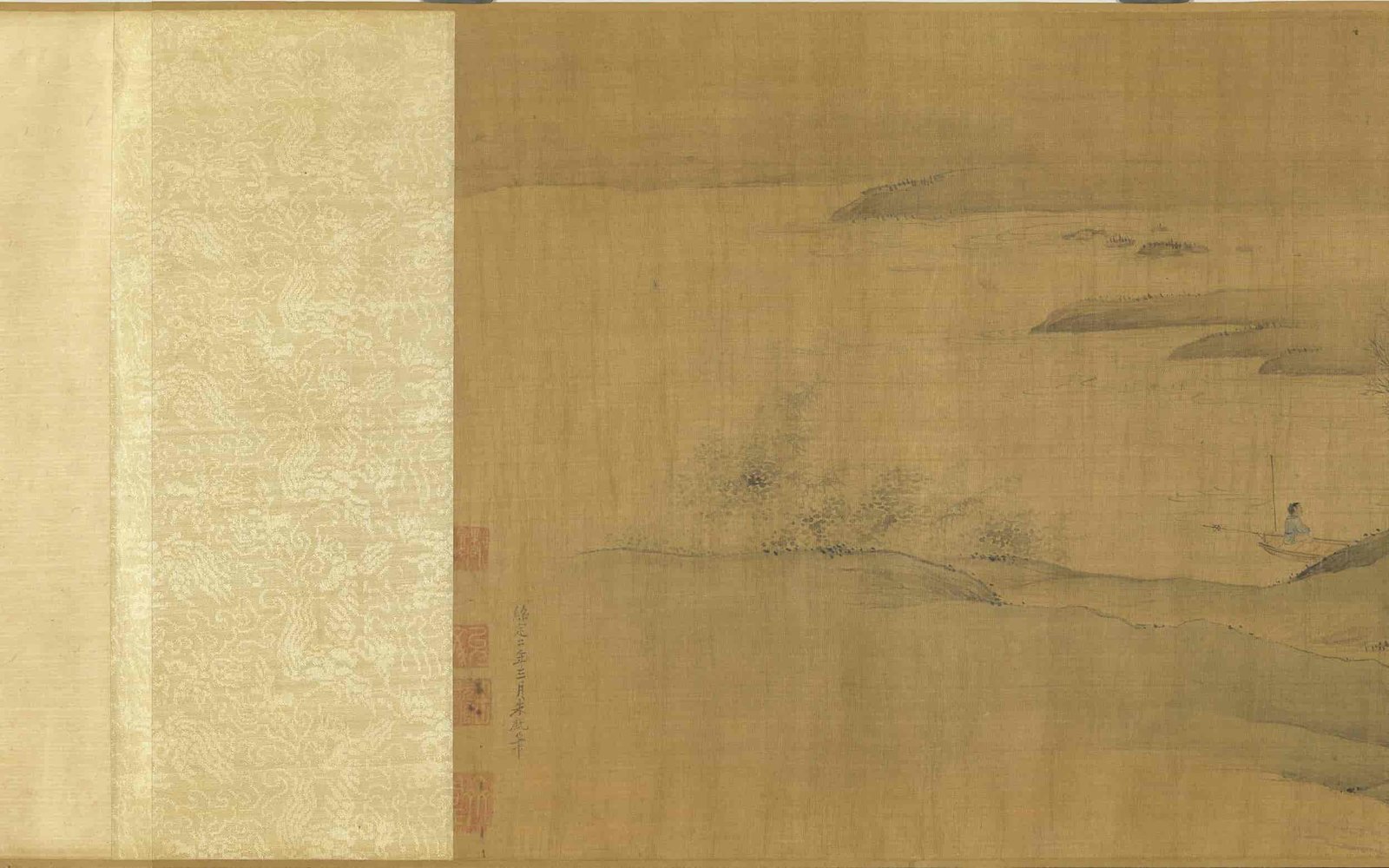
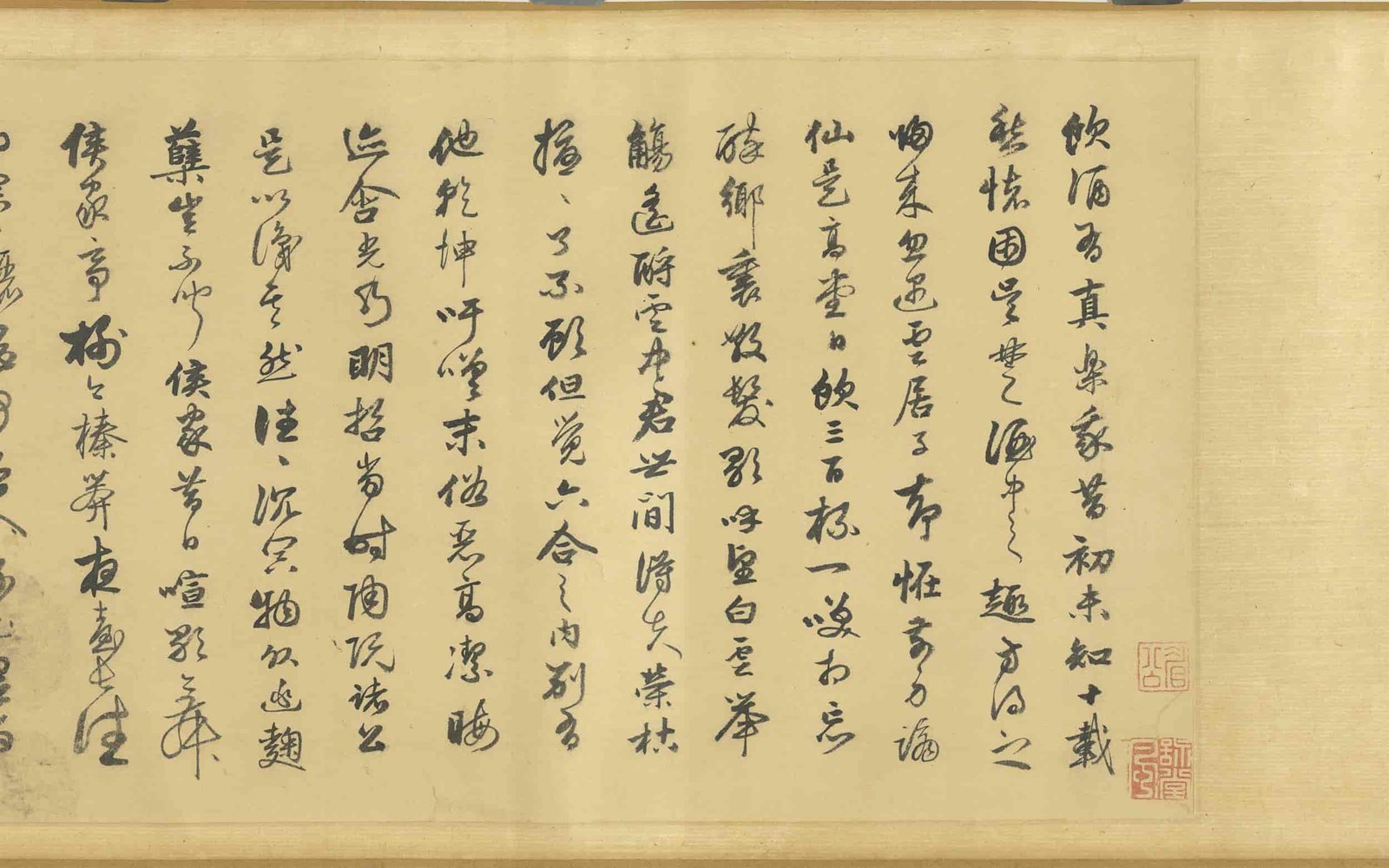
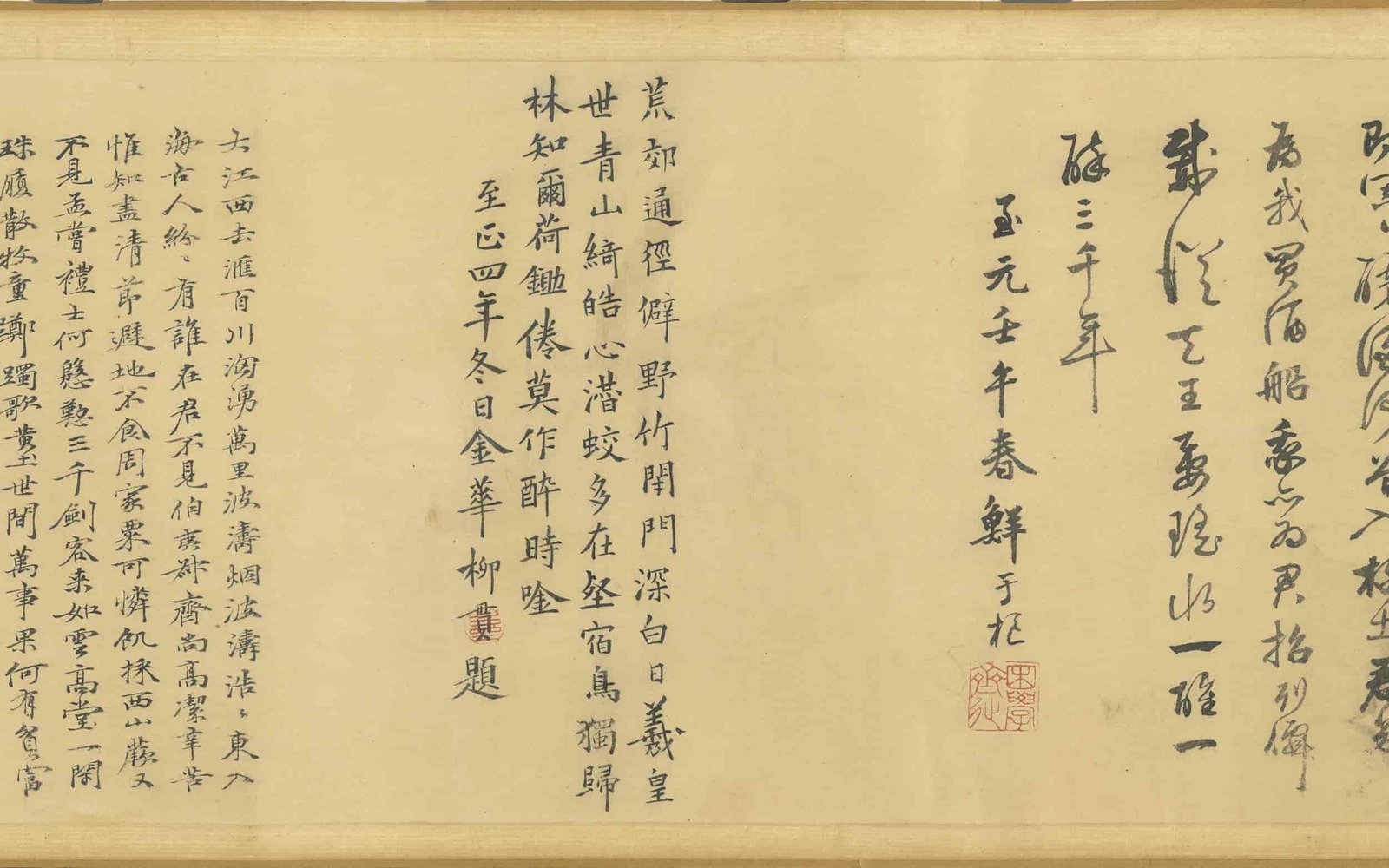
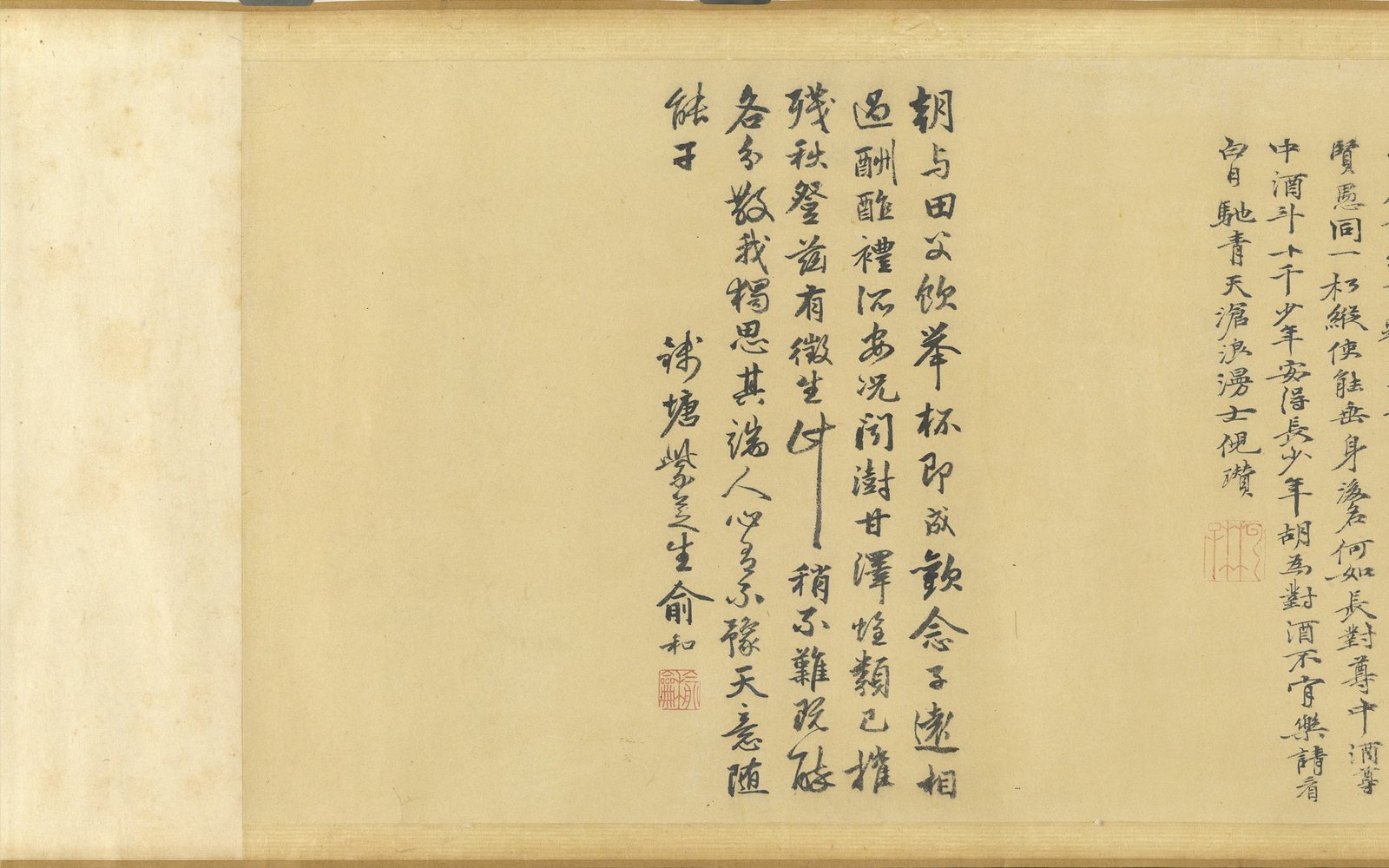
评价
目前还没有评价